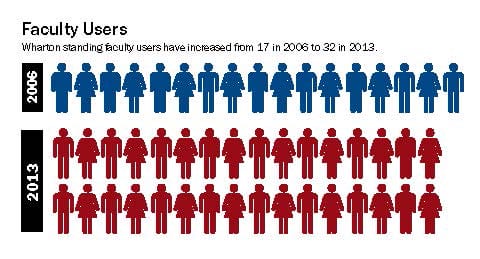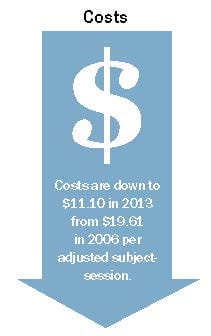The Wharton Behavioral Lab was launched in its current form in 2005 as a shared asset for all Wharton faculty and students. Its services support data collection for any and all behavioral research on business-related topics. A lot of the experiments could be considered surveys “on steroids,” says Faculty Director and Stephen J. Heyman Professor of Marketing J. Wesley Hutchinson. Recently, the lab has expanded into using eye-tracking technology and other physiological markers, like heart rate and facial expressions.
Watch a Wharton Behavioral Lab facial analysis experiment in action in the above video.
Now the biggest student employer on campus—over 2,500 students are paid volunteers for research studies—the lab is a well-run, and expanding, machine.
“The unique thing about the lab is the volume and its efficiency,” says Hutchinson.
More than 22,000 subject hours of data collection occur each year in the lab. Faculty use, experiment volume and resulting published research all trend upward. Costs, on the other hand, are dropping.


























